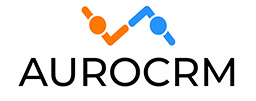Research shows that successful salespeople spend less than a third of their time in selling. On the other hand, more and more time is spent overseeing different administrative activities involving the generation of sales and demand.
Salespeople spend more time handling their profits, essentially, than producing them.
We do not need to tell you the direct and collateral harm done when salespeople are not selling, whether you are a salesperson, sales executive, or other investor or stakeholder in a growing company.
This is why we have written this guide to help you reverse the issue of sales productivity and inspire your team to return to what they enjoy.
Sales Productivity Challenges
Let us look at the three root causes for the issue sales companies have been grappling with for decades before sharing the secret to rising sales productivity:
Complexity
Today, sales is more nuanced. There are more touchpoints involved, customers are more advanced, and the technology used by reps evolves and expands almost every day.
Chaos
Entropy is still growing, and so does the chaos involved in handling today’s selling interactions. Differences between sellers are increasingly complex, a consensus has taken over the buy-side, and sellers face more confusion than ever amid record investments in data and analytics.
Context
The Zero Moment of Truth has blown up the balance and synchronicity that existed in typical buy/sell cases. This has put salespeople at a contextual disadvantage and has driven salespeople to spend more time handling administrative activities than managing the sales process when combined with current demand generation techniques.
How to Increase Sales Productivity
1. Map the customer acquisition process
The basic issue with “process” is that the goal is to minimize variance. Yet, the meaning lies in the variation in revenue. Selling is a highly vibrant, open-loop operation. The more complicated the bid, the greater the variation and uncertainty that needs to be dealt with.
Any time the method is different, creating a repeatable process can seem like an insurmountable task. In reality, it’s not. The key is to view the process through an “object-lens.”
Do not construct the methodology from A to Z; map the structure instead and find the waypoints. This way, mapping the system helps you to locate those primary inflection points where changes occur.
This allows you to create a series of repeatable mini-processes of your repeatable process that can be plugged in as needed.
2. Create a clearly defined service-level agreement (SLA)
A lack of a consistent definition of leads, situations, and progression is the single greatest and most common mistake made.
There are crystal-clear service-level agreements for great selling organizations that describe what each lead definition entails, the procedures and guidelines for handling those leads, and what is anticipated from each aspect of the revenue generation teams.
Instead of figuring out what to do and when to do it, a good SLA allows everyone, particularly salespeople, to spend their ‘thinking time’ concentrated on selling situations. This generates greater discipline and pace.
3. Stop focusing on efficiency
CRM for sales, video, chat, monitoring of emails, sharing of documents is important to keep track of the technologies they are meant to use, today’s sales representatives need a scorecard. Add marketing automation, lead scoring, forecasting, and more and you begin to understand that even a third of their time selling is a near miracle reps can invest.
This results in an efficiency focus. The problem is that we are trying to optimize the efficacy of each disparate method, which makes things less effective and typically slower.
Your goal should not be to concentrate on efficiency but to concentrate on pace instead. You must have a single system of reality in order to do so.
It is perfect for reps to use multiple applications, but all of them must be linked to a single system like a CRM for sales.
4. Design and execute contextual plays
This is what destroys sales productivity: sales representatives either waste no time thinking and performing their sales cadences like a poorly configured bot or are forced to spend so much time thinking about what to do that they have no time or brainpower to concentrate on the conversation taking place.
Contextual plays free up the genius of a sales rep to conduct and interact with their most significant asset: the prospect/customer.
5. Integrate and automate your playbook
You are competing at a disadvantage if you do not have a specified and recorded playbook and predictability and scale are highly unlikely. However, the playbook is not going to succeed if your sales reps have to worry about or refer to the playbook.
Sales and revenue speed can be dragged on by manual processes. Under the current structures, the playbook should be implemented and automated.
6. Track & Measure Sales Activities
You have to know where you actually stand in order to start enhancing sales efficiency. Dashboards for this reason are unbelievable. They help you envision patterns and gain useful insights into the activity-based metrics of each salesperson.
You would not be able to create a benchmark to calculate your productivity gains against if you allow your team to slack on logging their sales activities.
7. Keep Your People Motivated
It is really necessary, as a sales manager, to keep the reps motivated. Motivating the reps allows them to be more active and sell more eventually. You need to know what a rep does day-to-day and the challenges that a rep faces that affect productivity. To keep reps at ease and prepared to continue selling, concentrate on positivity and help.
Understand the interests of your representatives and provide advice on marketing and communicating with customers. To inspire them to sell more, give incentives for the most active reps.
Also Read: International Solutions Provider Manages Retail Operations with CRM
Maximize Your Sales Productivity
The quarterback of the customer acquisition process is the sales reps.
The key to optimizing the efficiency of this key position is to develop, execute, and optimize the processes that enable them to devote their resources and concentrate on the high-value actions that generate sales.
Auro CRM is the top Opensource CRM software that will increase revenue, maximize profitability, and boost sales productivity.

